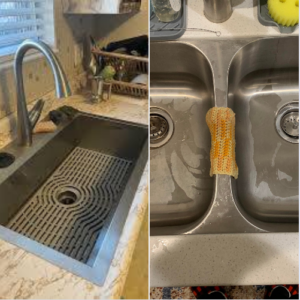
Choosing between a single or double kitchen sink can be a tough decision when remodeling or designing a kitchen. Each option has its own benefits, and the right choice depends on your cooking style, space, and personal preferences. Let’s explore the pros and cons of both to help you decide.
Single Sinks: A Spacious Solution
Single sinks are known for their large, uninterrupted basin that provides plenty of room for washing large pots, pans, and baking sheets. This design makes it easy to soak oversized items without the divider found in double sinks. If you regularly cook big meals or entertain guests, a single sink can offer the versatility you need.
- Pros:
- More space for washing larger items
- Easier to clean due to a single basin
- Simple, modern look
- Ideal for small kitchens with limited counter space
- Cons:
- Cannot separate dishes from food prep tasks
- Less flexibility when multitasking in the kitchen
Double Sinks: The Multi-Tasker’s Choice
Double sinks come with two separate basins, making it easy to divide tasks. You can wash dishes in one basin while prepping food in the other. This setup is perfect for families who juggle multiple kitchen tasks at once, and it can also be useful for washing and rinsing at the same time.
- Pros:
- Allows for multitasking
- Keeps dirty dishes separate from food prep
- Some models offer different-sized basins for flexibility
- More convenient for homes without a dishwasher
- Cons:
- Less room for large items
- May require more cleaning due to the divider
- Takes up more counter space
Which Sink Is Best for You?
If you’re after simplicity and space, a single sink might be your ideal option. On the other hand, if you value versatility and multitasking, a double sink could be the better fit. Consider your kitchen size, cooking habits, and daily routines to find the sink that meets your needs.
In the end, there’s no one-size-fits-all answer—it all comes down to your lifestyle and how you use your kitchen.